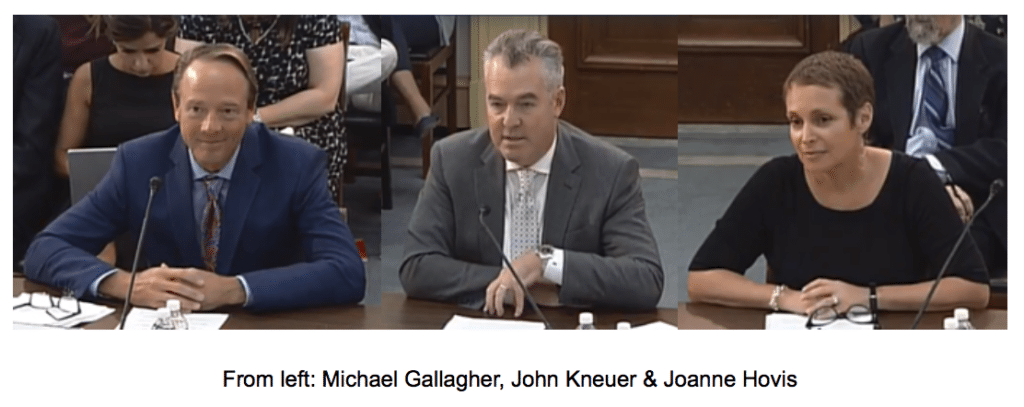Former leaders of the National Telecommunications and Information Administration say Congress and NTIA need to think more expansively about NTIA’s mission when it comes to closing the digital divide. The bipartisan House Energy and Commerce telecom subcommittee debated its discussion draft to reauthorize the NTIA for the first time since 1992. Subcommittee Chair Marsha Blackburn (R-TN) called the legislation a rural broadband bill that includes “good stewardship” of federal dollars. The measure would establish an office within NITA to coordinate rural broadband efforts across federal agencies.
Some of the Democrats on the subcommittee say the measure does not go far enough. Ranking Member Frank Pallone (D-NJ) said the draft “fails to provide NTIA the authority and direction it needs to address America’s 21st Century needs.” Mike Doyle (D-PA) used stronger language, saying: “This is a good start,” but to help further rural broadband deployment especially in Tribal communities, “we need to put our money where our mouth is. If we continue to just sit here these problems are not going to solve themselves.”
Pallone wished NTIA Administrator David Redl could have been able to come to the hearing and said: “Before we go forward we must have input from the administration on this draft.” Anna Eshoo (D-CA) agreed, noting the subcommittee should have a hearing with Redl. Blackburn reminded lawmakers Redl appeared before the group in March.
Much of the discussion centered around how NTIA will update and correct the broadband map in concert with the FCC. Critics say the map, which determines eligibility for broadband financial assistance to carriers, is inaccurate. Former NTIA Administrator Michael Gallagher suggested NTIA obtain data from state public utility commissions about wired communication locations. As technology improves, NTIA could also obtain lower-cost mapping technology than was previously available. Tracking online activities might indicate where broadband exists, suggested Gallagher, who’s now CEO of the Entertainment Software Association. “If they’re playing Pokemon Go, they have access to the internet.”
Another former NTIA Administrator, John Kneuer, said different institutions have their own reasons to collect data on assets like fiber links and tower locations. NTIA can survey different government agencies or carriers themselves to collect and synthesize this data, he said.
CTC Technology & Energy President Joanne Hovis, who has worked with NTIA on a number of projects, reminded lawmakers to include wired communications, specifically fiber, in their discussions. Having just returned from South Korea to see their infrastructure, Hovis said as it appears now, their rural areas will get “better 5G than ours” because of their existing infrastructure. “There will be no wireless without wires to support it.” If the U.S. doesn’t help rural areas get broadband connectivity, the digital divide will widen, Hovis warned.
By Leslie Stimson, Inside Towers Washington Bureau Chief
June 27, 2018





Reader Interactions